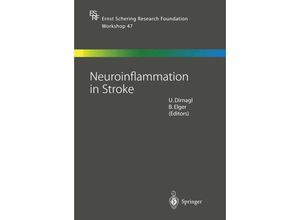Stroke is a major cause of death and disability in industrialized countries. To date the
medical need of efficient therapy for this de vastating cerebrovascular disorder remains unmet.
During the last decades the development of pharmacological stroke therapies was aimed at
improving patient outcome by restoration of cerebral blood flow or protection from acute
neuronal cell death. Almost all of The participants of the workshop VI Preface these appraaches
targeted the very early events after vascular occIu sion. However primarily for logistical
reasons only a small portion of strakes can be treated within 6-10 h after the insult. In
recent years it has been recognized that strake pathophysiology is a dynamic pracess and that
delayed pracesses which occur dur ing the days and weeks following arterial occIusion may
lead to further deterioration or to impairment of recovery and rehabilitation in subacute and
chranic stages. Evidence is accumulating that neu rainflammation is a major player in these
delayed pathophysiologi cal pracesses. While some components of neurainflammation such as
removal of cell debris and release of traphic factors may support recovery pracesses others
such as the generation of free radicals and other cytotoxic mediators are deleterious for brain
tissue after isch emia. Thus neurainflammation after strake can be considered a dou ble-edged
sword having potentially both detrimental and beneficial effects. As in other inflammatory
reactions in the body the cellular and humoral interactions are highly complex in the setting
of neu rainflammation.



